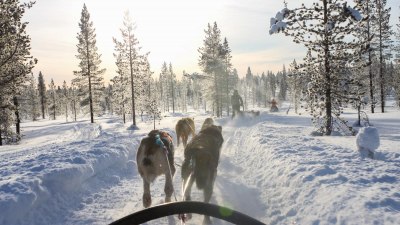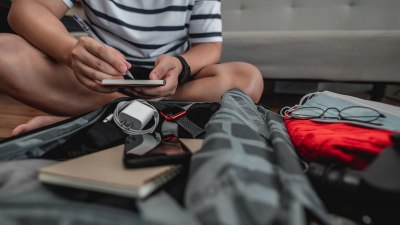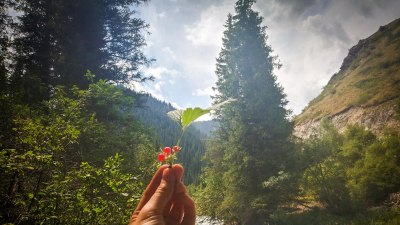Bike and Camp: How to Combine Cycling and Camping
Explore the ultimate guide to blend cycling and camping for unforgettable adventures.

Image created with Flux Schnell
Cycling and camping are two exhilarating activities that, when combined, can create memorable adventures in the great outdoors. By merging these two hobbies, you can traverse stunning landscapes on your bike, immerse yourself in nature, and experience the thrill of camping under the stars. This guide will help you understand how to effectively combine cycling and camping, offering tips on planning, gear, and safety to ensure a successful trip.
Planning Your Bike and Camp Adventure
The first step to combining cycling and camping is planning your route and destination. Research is crucial; look for bike paths, trails, or roads that are safe and scenic. Websites like Adventure Cycling Association or local cycling clubs can be excellent resources for finding routes that cater to both your cycling and camping needs. When planning your journey, consider the following factors: distance, difficulty level, points of interest, and available campgrounds.
Choose a destination that excites you but also offers practical amenities such as campsites with restrooms, water sources, and provisions for food. Additionally, consider the terrain; flat routes may be easier and more enjoyable, especially if you're carrying camping gear. If you're planning a multi-day excursion, ensure your route includes adequate stopping points to camp overnight.
Essential Gear for Bike and Camp
To successfully combine cycling and camping, you must be adequately prepared with the right gear. The critical components of a bike camping trip involve both cycling and camping equipment. Here’s a list of essentials:
Bike: Your bike should be reliable and suitable for the terrain you'll encounter. Whether you opt for a touring bike, a mountain bike, or a hybrid, ensure it's in good condition and equipped with necessary accessories like fenders, racks, and panniers.
Panniers and Racks: Since you will need to transport camping gear, a sturdy rear rack and waterproof panniers will help you manage your load efficiently. Make sure your panniers are accessible, well-balanced, and not overly bulky to ensure a comfortable ride.
Tent: Choose a tent that suits your needs according to the number of people camping and the weight that is manageable for cycling. Look for lightweight options that are easy to set up and pack down.
Sleeping Gear: A lightweight sleeping bag and a sleeping pad will provide comfort on the ground. Make sure your sleeping bag is rated for the temperatures you'll encounter.
Cooking Equipment: A compact stove, lightweight cookware, and utensils are essential for meal preparation. Consider bringing a multi-tool or knife for versatility.
Food and Water: Stock up on lightweight, high-calorie food items that are easy to prepare, such as freeze-dried meals, nuts, and energy bars. Carry a water filter or purification tablets for safe drinking water whenever accessing natural water sources.
Clothing: Dress in layers to adapt to changing weather conditions. Breathable, moisture-wicking fabric is crucial, as is a good-quality rain jacket to keep you dry.
Finally, don't forget safety gear, such as a helmet, reflectors, lights for nighttime riding, and first aid supplies. Depending on the location and duration of your trip, consider extra items such as navigation tools and emergency gear.
Choosing the Right Campground
Choosing the right camping location is another essential aspect of your cycling adventure. Research campgrounds along your route to find places that meet your needs. Many campgrounds offer biker-friendly facilities, including designated tent areas, fire pits, and restrooms. Be mindful of campground rules regarding fires and wildlife to ensure a safe and respectful experience.
Some well-known biking and camping destinations in the US include the Pacific Coast Route, the Great Allegheny Passage, and the Outer Banks in North Carolina. These locations provide scenic views, family-friendly environments, and plenty of local attractions to explore during your trip. Make reservations when possible, especially if you're camping during peak season.
Staying Safe While Bike Camping
Safety should always be a priority when embarking on a bike camping adventure. Here are some tips to help you stay safe:
Plan for Emergencies: Always carry a first aid kit and familiarize yourself with basic first aid procedures. Make sure someone knows your route and expected return time. Having a charged cell phone or emergency beacon may also be a good idea.
Know Your Limits: Listen to your body throughout the trip. If you’re tired or feeling unwell, consider resting. Avoid overexertion, no matter how enticing the challenge may be.
Wildlife Precautions: If you’re camping in areas with wildlife, store food properly in bear canisters or hanging from trees. Understand the local wildlife and appropriate actions to take during encounters.
Stay Hydrated: Dehydration can easily occur while biking and camping. Drink water regularly, especially during rides, and keep an eye out for natural water sources or campgrounds.
Nutrition and Cooking on the Go
Food plays a vital role in maintaining energy levels during your cycling journey. Plan meals that are not only nutritious and satisfying but also easy to prepare. Quick-cook options, like dehydrated meals, can save time and effort at the campsite. Don't forget to carry a portable stove and cookware for making hot meals.
Here's a sample meal plan you might consider:
Breakfast: Instant oatmeal or breakfast bars with nuts
Lunch: Whole grain wraps with nut butter or hummus and veggies
Dinner: A dehydrated meal that only requires water and a camp stove. Consider adding vegetables for increased nutrition.
Snacks: Trail mix, energy bars, jerky, and fresh fruit pack well and provide quick energy throughout the day.
Building Skills for Success
If you’re new to cycling or camping, developing your skills beforehand will substantially enhance your experience. Consider going on shorter trips to practice setting up your tent, cooking, and managing gear. This will help you feel more confident when embarking on longer journeys.
Additionally, learn bike maintenance, so you can quickly address minor issues on the road. Knowing how to fix a flat tire or make chain adjustments can save you time and frustration during your adventure. There are plenty of online resources, bike shops, and community workshops available that can help you learn these essential skills.
Group vs. Solo Bike Camping
Deciding whether to bike camp solo or with a group is another critical decision. Solo bike camping can offer unparalleled freedom and the opportunity for self-discovery. However, it also requires a higher degree of self-sufficiency and safety awareness. Make sure you're well-prepared if you opt for solo travel.
On the other hand, group camping can enhance the experience through shared bonding, teamwork, and the ability to tackle challenges together. It can also make cooking and transporting gear easier. Plus, it provides a safety net during unforeseen circumstances.
Capturing Memories
Documenting your bike camping adventure can be an enriching experience. Bring along a camera or use your phone for photos and journaling to create lasting memories. Share your journey with friends and family through social media or blogs. This can inspire others to embark on their own bike and camp adventures while allowing you to relive those wonderful moments.
Combining cycling and camping is an excellent way to explore the beauty of nature while enjoying the thrill of the ride. With the right preparation, gear, and safety measures, you'll be able to create unforgettable experiences that connect you with the outdoors. Whether you're traveling solo or with friends, every pedal stroke will bring you closer to scenic vistas and the joy of sleeping under the stars. So, get your bike, pack your camping gear, and hit the open road for an adventure that you won't soon forget!











